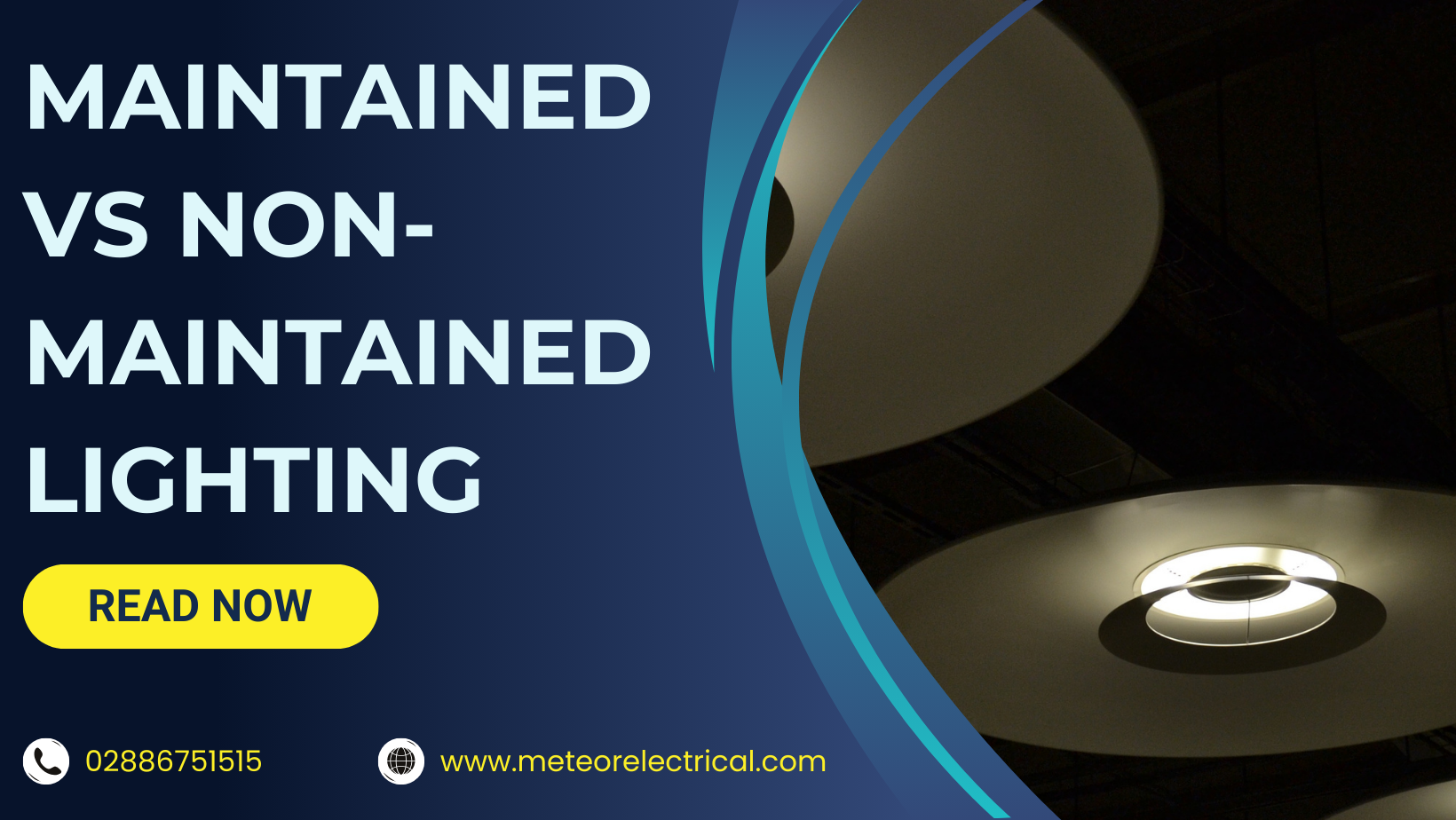All about Maintained or Non Maintained Emergency Lighting
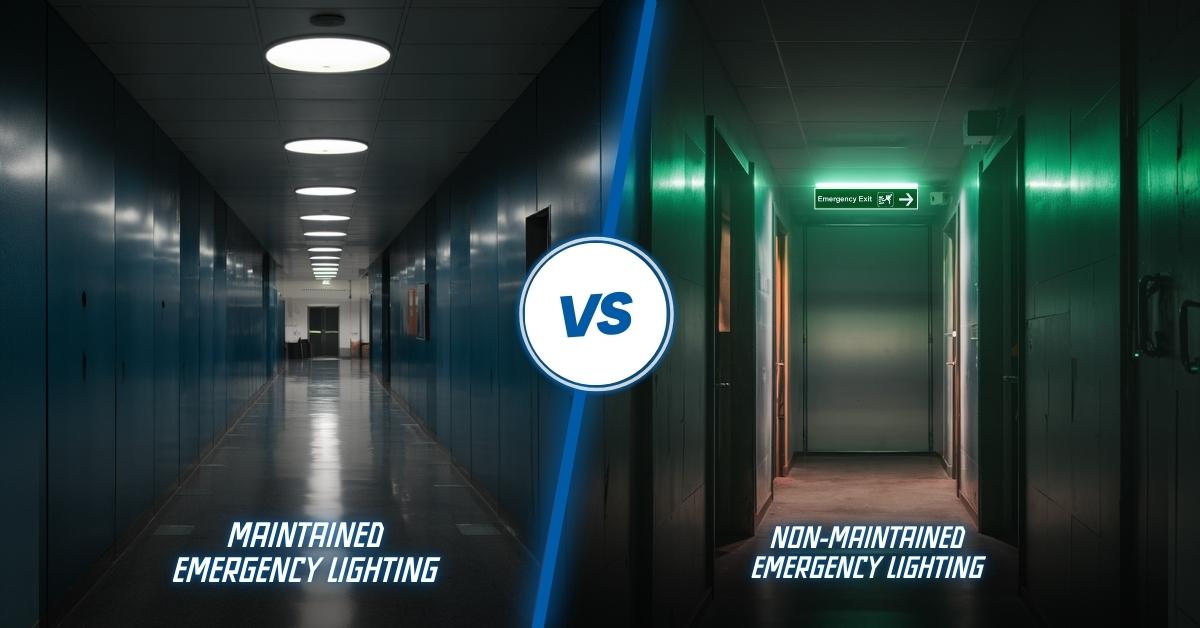
Whether you own a commercial building, office space, or a home, having quality emergency lighting is essential. According to the UK government, over 18,000 fires in non-domestic buildings were reported in 2019/20, underscoring the importance of reliable emergency lighting for safety and compliance. These lights are crucial for maintaining safety and reducing potential hazards.
People can evacuate quickly and safely with the help of emergency lights in an emergency. Statistics from the National Fire Protection Association (NFPA) reveal that proper emergency lighting can significantly reduce evacuation times and prevent injuries during power outages or fires.
When choosing the right luminaire, you have two main options: maintained and non-maintained. Understanding the differences and benefits of each can help you make an informed decision that ensures the safety of everyone in your building.
Maintained or Non-Maintained Emergency Lighting
Non-maintained emergency lights are an ideal choice because they are energy efficient. They ensure security without consuming too much power. If you’re considering installing these helpful fixtures, let’s explore what they are all about.
What Is Emergency Lighting?

Before we explore the different types of emergency lighting, let's understand what these fixtures are. This will help you use them to their full potential.
Emergency light fittings are an essential part of fire safety provision in any building. Because of this, you should install them wherever you can.
Emergency light fittings act as a backup light source during power cuts or emergencies. They ensure your building's lights remain operational when you need them the most.
If there is a need for evacuation, emergency luminaires will light up a safe pathway for occupants. You often see these lights in public buildings, but they can be crucial for homes as well. In an emergency, these luminaires ensure you and your family remain safe.
Home emergency fixtures light up exit pathways during power cuts, making quicker evacuations possible in the event of a fire. Because of this function, emergency lights are a vital part of your home lighting design.
Any public building must adhere to safety regulations and codes. The best way to meet these codes is by regularly maintaining the lights to ensure they work at full capacity when needed. If you’re in the UK, the Industry Committee for Emergency Lighting (ICEL) is your go-to for information regarding these fixtures.
Follow the ICEL guidelines when installing and maintaining your lights to ensure peace of mind. Finding the right emergency lighting can often be nerve-wracking. If you want high-quality fixtures, visit Meteor Electrical. At Meteor, we only carry the best luminaires backed by our industry expertise.
Whether you want non-maintained emergency lights or something else, Meteor has you covered. You can also explore our LED emergency lighting for better energy savings.
What Are Non-Maintained Emergency Lights?
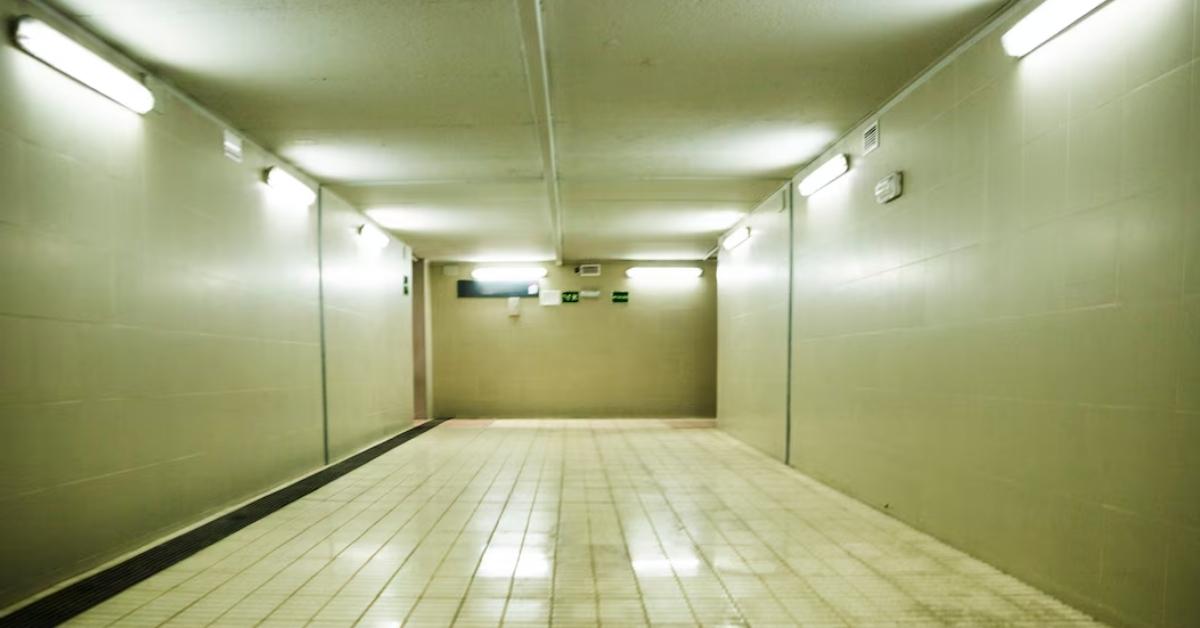
When it comes to choosing the right kind of emergency light, you have two main options: maintained and non-maintained emergency lights. So, what’s the difference?
Non-maintained emergency lights only switch on during a power cut or any other related emergency. These lights turn on immediately, so you don’t have to worry about any wait times in an emergency.
We recommend non-maintained lighting because they provide all the benefits of regular emergency lights and much more. But before we get into that, let’s see how non-maintained lights work.
Think of these luminaires as backup lights that switch on when your main lights fail. In public buildings, non-maintained lighting illuminates pathways for a safe exit. At home, these lights provide visibility during power cuts.
One common example of a non-maintained emergency light is an exit sign. These signs aren’t illuminated under normal conditions, but when the power fails, they emit a bright light that guides people to safety.
Non-maintained lights are typically found in offices or warehouses, but they can also be added to your home. Some have a subtle design, so they blend seamlessly with your other fixtures.
Most electricians wire the non-maintained lights to the standard lighting circuit, ensuring they respond accurately to power failures.
For excellent non-maintained lighting, check out Meteor’s Kosnic range of emergency fixtures. With Kosnic’s innovative LED technology, you can reduce energy consumption while ensuring safety.
What Are Other Types of Emergency Lighting?
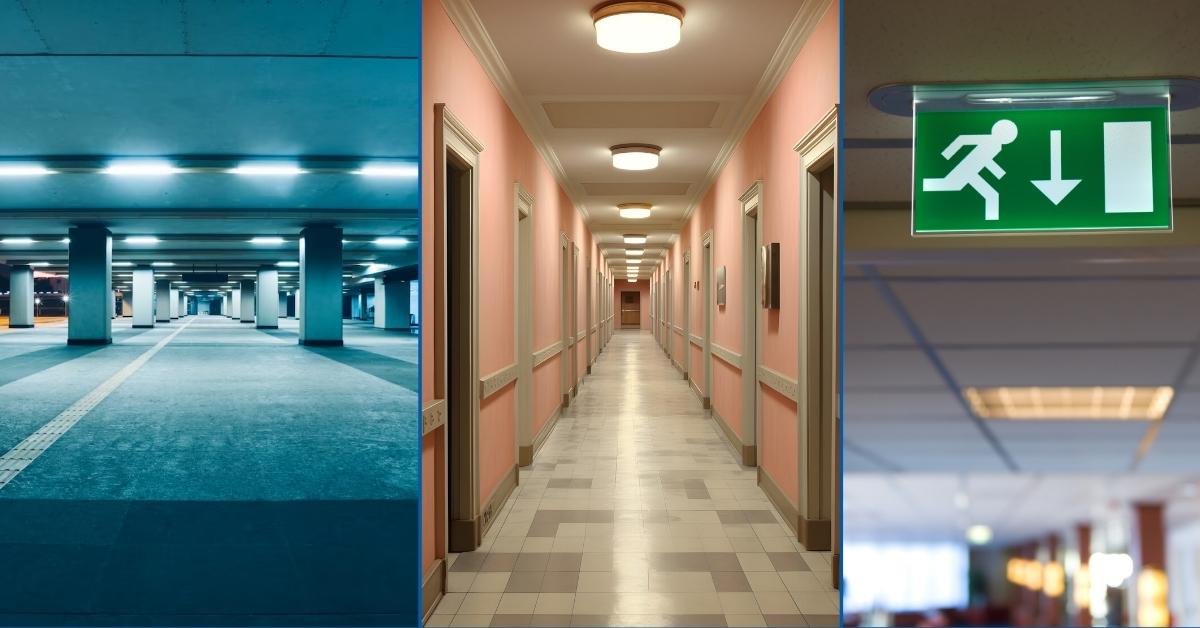
As mentioned earlier, there are multiple types of emergency lighting. Apart from non-maintained lighting, here are some other options:
1. Maintained Emergency Lighting
Another popular option is maintained emergency fixtures. These luminaires remain operational at all times. In regular situations, they use the main power source to stay on. When an emergency happens, they switch to a backup battery without any interruption.
Maintained lights are great for guiding large groups towards evacuation areas, which is why they’re common in public spaces or office buildings. They might seem out of place in households, but if you’re worried about energy consumption, LED options are available.
2. Combined Emergency Lights
Combined emergency lights feature two or more lights. The emergency lighting supply powers one bulb while the other uses your main power. Depending on your needs, you can choose between maintained or non-maintained options.
3. Compound Self-Contained Emergency Lights
This type works alongside another light source, often using an LED bulb for efficiency. Available in both maintained and non-maintained versions, these lights are versatile and reliable.
4. Satellite Emergency Lights
Satellite emergency lights work with self-contained luminaires to provide emergency illumination. They derive power from the combined self-contained models and are available in both maintained and non-maintained versions.
Also Read: Illuminate and Save: The Power of Energy-Efficient Ceiling Spotlights
Which Works Best: Non-Maintained or Maintained Emergency Light?
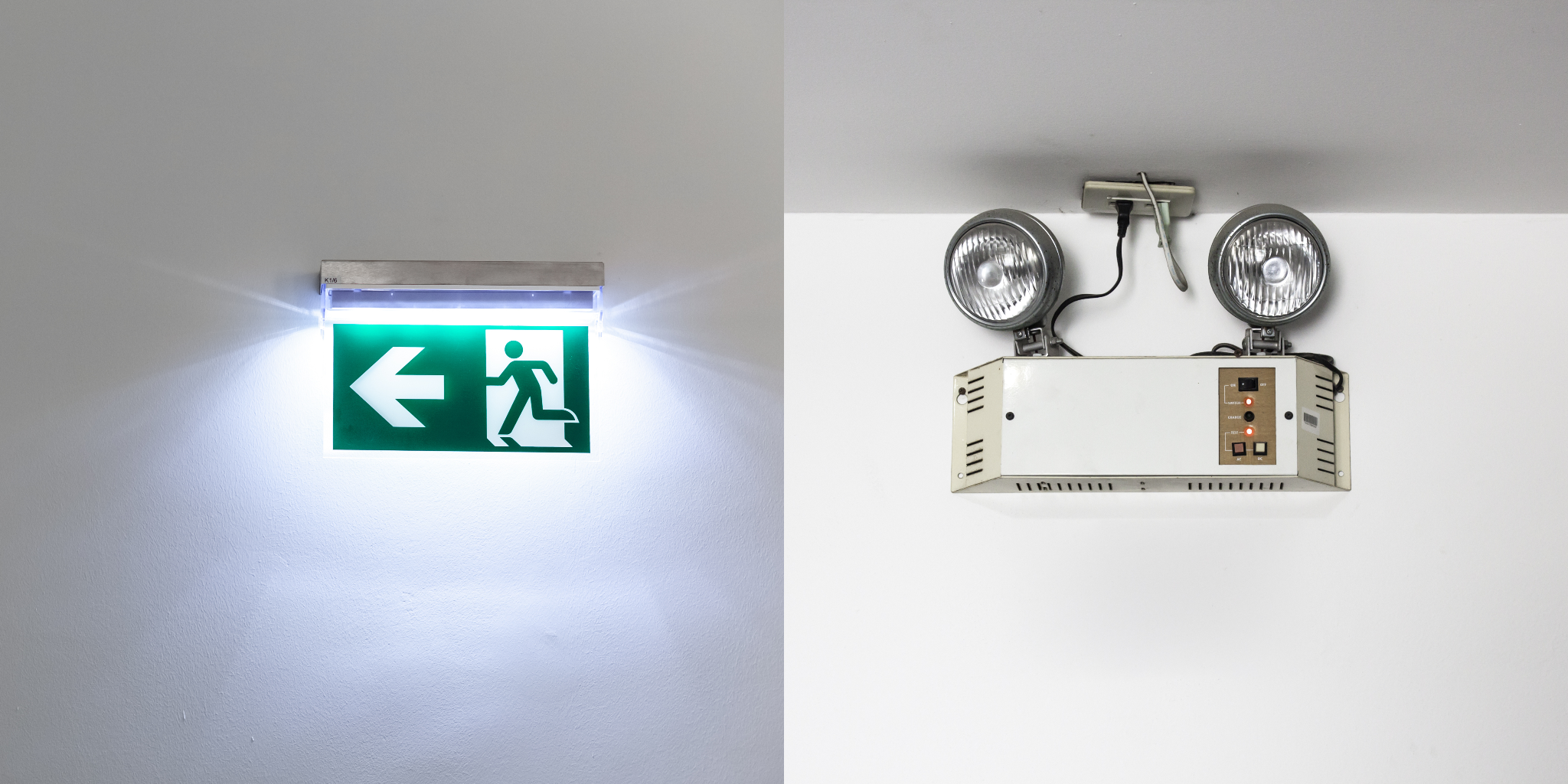
By now, you should be familiar with the different kinds of emergency lighting. You might have noticed that each luminaire is available in either a maintained or non-maintained format.
If you’re unsure which version works best for you, here’s a breakdown of non-maintained and maintained emergency lighting.
Credit: Safelincs Ltd.
Which Consumes The Most Power?
Energy consumption is the main concern for any consumer. If you are looking for emergency lights, you might be concerned about their energy efficiency.
Since maintained lights are always on, they consume more energy by design. Even though non-maintained lights are not constantly in operation, they still consume a slight trickle of energy from your power source.
When viewed over their entire lifespan, non-maintained emergency lights consume less energy than maintained models. If you factor LED lighting into this mix, you can enjoy even more savings in the long term.
Which Format Should I Choose?

The right emergency light for you depends on your needs. If energy consumption is your main concern, it’s best to stick to non-maintained lights.
However, you must remember that these luminaires are only recommended for areas where people are familiar with their surroundings. This is why maintained lights are mostly seen in public settings. If you want non-maintained lights in public settings, you can use them alongside the maintained fixtures.
The main goal of emergency lights is to provide illumination when other lights don’t work, so choose your fixture according to your needs.
| Feature | Maintained Emergency Lighting | Non-Maintained Emergency Lighting |
|---|---|---|
| Operation | Always on, switches to backup power during an emergency | Only turns on during a power cut or emergency |
| Energy Consumption | Higher, as it remains on continuously | Lower, consumes energy only during an emergency |
| Best Use Cases | Public spaces, areas requiring continuous illumination | Residential settings, familiar environments |
| Installation Locations | Public buildings, office spaces, large gathering areas | Offices, warehouses, homes |
| Energy Efficiency with LED | Available, reduces energy consumption compared to traditional bulbs | Highly efficient, further reduces energy usage |
| Maintenance Requirements | Regular checks and battery replacements needed | Regular checks and battery replacements needed |
| Brightness | Consistent brightness, critical for evacuation pathways | Bright illumination only when activated |
| Lifespan | Dependent on continuous use, LED options last longer | Typically longer lifespan due to less frequent use |
| Regulations Compliance | Must comply with BS 5266-1 in the UK | Must comply with BS 5266-1 in the UK |
What Are The Important Components Of Non-Maintained Emergency Lights?
Emergency light fittings are built with several components that ensure your buildings stay illuminated during power cuts. These important components are:
- LED: LED chips are an important component in LED emergency lighting. They light up when the luminaires are powered on.
- Test Button: The test button on emergency light fittings allows electricians to simulate a power failure to test the light’s operational capabilities.
- Battery: This is the emergency light battery where power is stored for operation during power failures.
- Emergency Light Module: The emergency light module allows the light to supply power and charge the light fitting, which is important for the light’s operational abilities.
- Housing: LED emergency lights have a housing that is made from materials to suit specific environments and applications.
- Charging Indicator: The emergency light charging indicator has a red LED that indicates when the light fixture is actively being charged.
- Emergency Light Indicator Symbol: This symbol indicates that the light fixture is an emergency light. It usually comprises a code.
What Are LED Non-Maintained Emergency Lights?
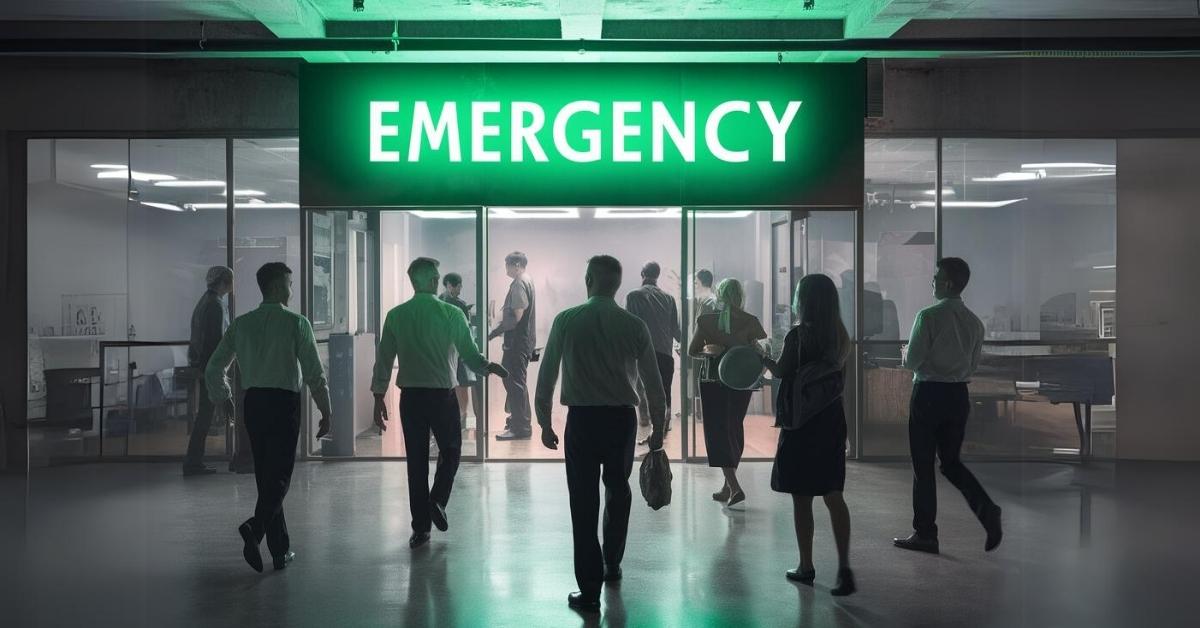
As we’ve mentioned before, if you want energy-efficient emergency lighting, choose the LED option. Many consumers are opting for these highly convenient luminaires as they provide multiple benefits.
LED emergency light fittings use a light-emitting diode to illuminate pathways during a power cut. They are a great solution for red style="font-weight: 400;"ucing your carbon footprint.
LED lights consume less energy by design, so they don’t put too much load on a power grid. Since LEDs do not contain any harmful gases, they are very easy to dispose of. If you add a renewable power source with these lights, they become extremely cost-effective in the long run.
Apart from these factors, let’s take a look at some other benefits of LED non-maintained emergency lights.
1. Better Efficiency
This factor not only ensures low energy consumption, but your lights generally do their job much better. LED emergency lights use electroluminescence, a process in which electrons are combined with electron holes when the LED is switched on.
In comparison, traditional incandescent bulbs contain a filament that burns to create illumination. This filament is the reason why traditional lights have become so inefficient. The burning of the filament produces heat energy, so most of the power is wasted through this process. Not only are you wasting energy, but also slowly deteriorating your bulb.
The good thing about LEDs is that they don’t have a filament, so any problems with this component are instantly removed. LED emergency lighting is thinner and lighter, making it more economical and cost-efficient.
Apart from the filament, LED emergency lighting has a low-temperature performance and is digitally controlled with robust bulbs. These attributes make LED emergency lighting more efficient than other emergency light fittings. LED emergency lighting also produces 30% energy savings compared to other light bulbs.
2. Longer Lifespan
LED emergency lights have a 50-times longer lifespan than standard emergency lights. The burning filament inside standard lighting burns out very quickly, requiring a bulb replacement. LED emergency lights do not have a burning filament, allowing them to operate 50,000 hours longer than standard emergency light fittings.
3. Better Brightness
Brightness is extremely important in emergency light fittings. Emergency lights need to be bright to properly illuminate evacuation paths in dangerous situations. LED emergency lights have some of the brightest bulbs and are much brighter than standard emergency light bulbs of the same wattage. Therefore, LED emergency lights are the best choice for brightness in emergency light fittings.
4. Lower Cost Maintenance
Inspection and testing are requirements for all emergency lighting. Even LED luminaires need regular inspections to ensure they are ready to go in case of an emergency. The great thing about LED lights is that you spend far less on their maintenance compared to other light bulbs. The extended lifespan of LED emergency lighting means you can enjoy your luminaires for a long time without worrying about replacing them.
Important Factors To Consider Before Installing Non-Maintained Emergency Lights
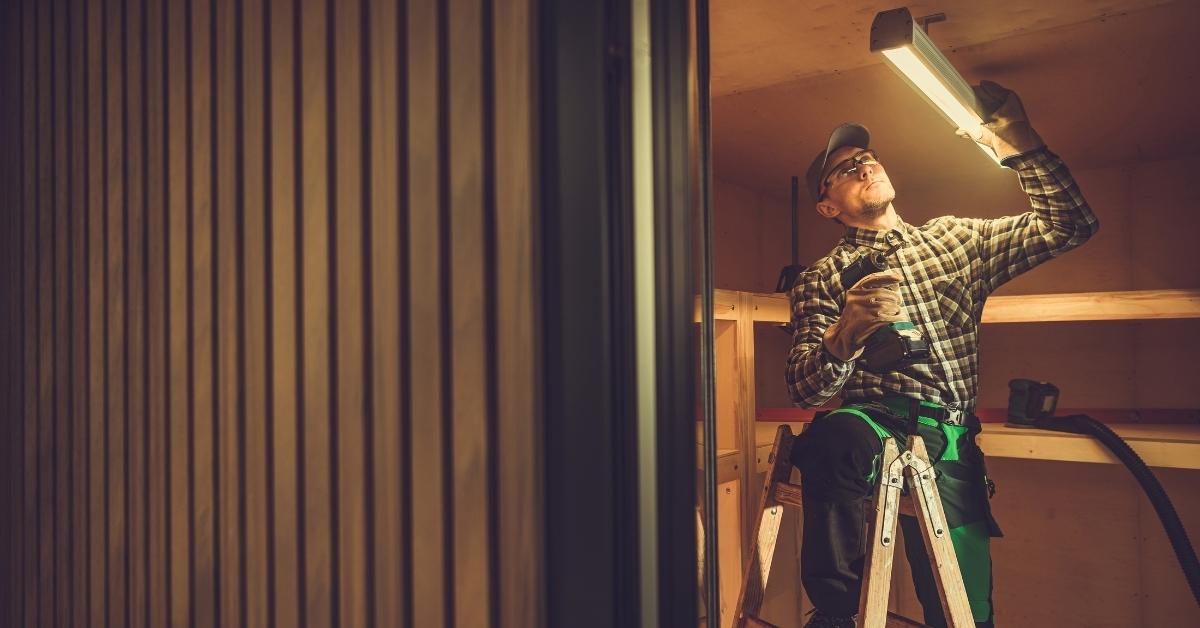
Before installing emergency light fittings, it's crucial to consider several key factors. Careful planning and installation will help you get the best possible results from your emergency lighting system. Here’s what you need to keep in mind:
- Planning and Design: The planning and design of your emergency lighting system are fundamental. Ensure your design covers all necessary areas and meets safety standards.
- Positioning: The positioning of the emergency light fittings is vital. Proper placement ensures maximum effectiveness during emergencies.
- Permanent or Temporary: Decide whether your light fittings will be permanent or temporary. This decision can affect the type and installation method of your lights.
- Routine Testing and Maintenance: Establish a regular testing and maintenance schedule for your emergency lights. Routine checks ensure they are always ready to function when needed.
These parameters are essential for getting the best use out of your emergency lighting system. Without proper planning, your emergency lighting may fail to meet safety guidelines.
Also Know: The Purpose of Installing Emergency Lighting in your Workplace
What Regulations Do You Need To Follow For Non-Maintained Emergency Lights?

As we’ve mentioned before, adhering to important guidelines is crucial when it comes to emergency lighting. Since these luminaires are essential for safety, you must ensure they work correctly.
In the UK, the standard protection code for emergency lighting is BS 5266-1. This code outlines the responsibilities of the “responsible person” in charge of handling emergency lighting. The UK standard also provides clear guidelines for installing emergency luminaires, ensuring your power supply is not disrupted.
The regulation code also includes clear working standards for you, your landlord, or your employer to follow. It provides an understanding of emergency lighting's importance and the parameters for installation, performance, and upkeep.
One crucial rule is the level of brightness needed. To ensure you have the best emergency lighting possible, the illumination level shouldn’t be less than 10% of the normal lighting value. Test your lighting at relevant location points, especially high-risk zones. However, certain activities might require a higher light value.
For example, if your building is in a darker location, you might require brighter emergency lighting. Check the BSEN1838 regulations for specific illumination requirements regarding high-risk zones.
How To Conduct Maintenance Checks For Your Emergency Lighting?
Once you follow all the important guidelines, conducting proper maintenance of your emergency lighting is essential. Here are a few ways to go about this process:
Annual Maintenance Check
One of the best ways to care for your emergency luminaires is through an annual maintenance check. This testing ensures their long lifespan. Follow these steps:
- Switch off the main power supply to your emergency light fixture to prevent electrocution and damage to the light circuit system.
- Conduct a visual inspection of your lights to ensure they are lit properly.
- Leave the power supply switched off for the full duration of the light’s rated length, usually three hours. Check the emergency light’s rating before conducting the test.
- If any battery fails before the rating period, replace the backup battery.
- Record all results after the test is completed.
Credit: Optimal Fire & Security Ltd
Monthly Maintenance Check
Apart from an annual test, you should also conduct a standard monthly assessment to stay prepared for any emergency. Follow these steps:
- Switch off the main power supply to the emergency light fittings to ensure the safe handling of light circuits.
- Some light fixtures have a separate switch installed in the panel, allowing emergency lights to be tested without switching off all the power.
- Visually inspect your light fittings to ensure they are operating as expected.
- Document and note any issues, investigating further if necessary.
- Record the full test results once you finish your maintenance check.
Stay Safe With Meteor
Choosing the right emergency lighting is crucial for ensuring the safety and security of your building. At Meteor Electrical, we offer a comprehensive range of high-quality emergency luminaires that cater to all your needs. Whether you require maintained or non-maintained emergency lighting, we have you covered.
Our non-maintained emergency fixtures provide excellent security and energy savings, making them a smart choice for both commercial and residential settings. With our industry-backed expertise, you can trust that you are getting the best products on the market.
Visit Meteor Electrical today to explore our wide selection of LED emergency lights and other emergency lighting solutions. Let us help you stay safe and prepared for any situation.
Stay safe, stay illuminated, and choose Meteor Electrical for all your emergency lighting needs!
FAQs:
1. What is the difference between maintained and non-maintained emergency lighting?
Maintained lights are always on and switched to a backup power source during an emergency. Non-maintained lights only turn on during a power cut or emergency.
2. How often should I test my emergency lighting?
You should conduct a monthly visual check and an annual full-duration test to ensure proper functionality.
3. Why should I choose LED emergency lights?
LED emergency lights are energy-efficient, have a longer lifespan, and provide better brightness compared to traditional bulbs.
4. What are the regulations for emergency lighting in the UK?
In the UK, emergency lighting must comply with BS 5266-1, which outlines installation, maintenance, and performance standards.
5. Can I install non-maintained emergency lights in public buildings?
Yes, non-maintained emergency lights can be used in public buildings, often alongside maintained fixtures, to provide adequate emergency illumination.

